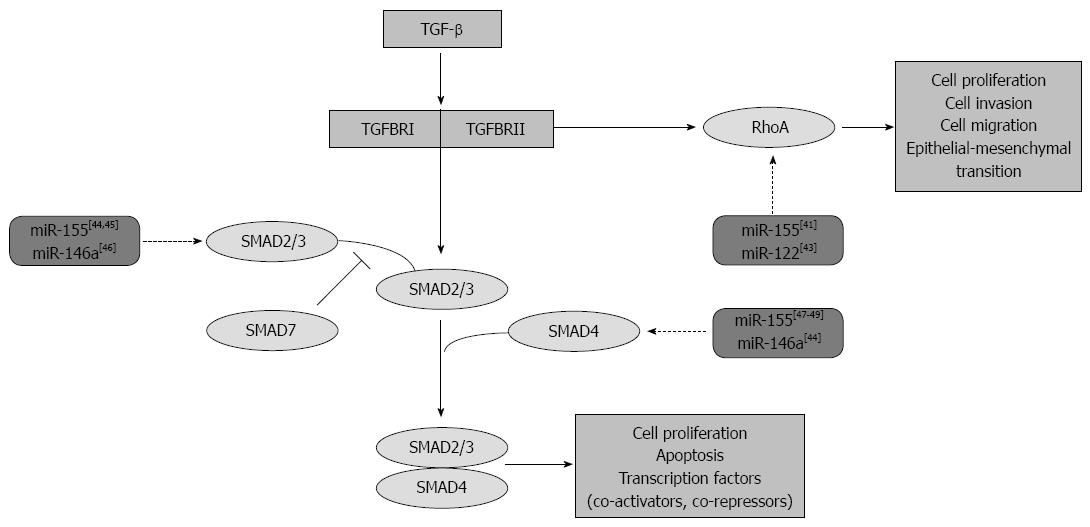Copyright
©The Author(s) 2016.
World J Gastroenterol. Jul 14, 2016; 22(26): 6027-6035
Published online Jul 14, 2016. doi: 10.3748/wjg.v22.i26.6027
Published online Jul 14, 2016. doi: 10.3748/wjg.v22.i26.6027
Figure 4 Schematic representation of the target interactions between transforming growth factor-β - microRNA-146a, -155 and -122.
Transforming growth factor (TGF)-β is considered to be a major anti-inflammatory cytokine playing an important role in the pathogenesis of inflammatory bowel disease. MicroRNA (miR)-146a, -155 and -122 act as possible regulators of the TGF-β signal transduction, with capacity to induce apoptosis, cell migration, invasion and proliferation. Moreover, TGF-β induces and represses the transcription of various genes. Data shown in the figure are based on MiRTarBase Database. SMAD: Mothers against decapentaplegic homolog; RhoA: Ras homolog gene family, member A.
- Citation: Szűcs D, Béres NJ, Rokonay R, Boros K, Borka K, Kiss Z, Arató A, Szabó AJ, Vannay &, Sziksz E, Bereczki C, Veres G. Increased duodenal expression of miR-146a and -155 in pediatric Crohn’s disease. World J Gastroenterol 2016; 22(26): 6027-6035
- URL: https://www.wjgnet.com/1007-9327/full/v22/i26/6027.htm
- DOI: https://dx.doi.org/10.3748/wjg.v22.i26.6027









